German Chamomile / Spring / Summer / Edible
German Chamomile is A non-native annual member of the daisy family, it can be used in the same way as the less common English Chamomile.
Common Names
Chamomile, Camomile, German chamomile, Hungarian chamomile, Wild chamomile, Blue chamomile, or Scented mayweed
Botanical Name
Matricaria chamomilla
Scientific Classification
Kingdom – Plantae
Order – Asterales
Family – Asteraceae
Physical Characteristics for German Chamomile
Leaves
The leaves are very small, 2 times pinnate, finely divided and downy to touch. They have an apple like aroma when they are crushed.
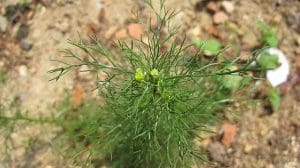
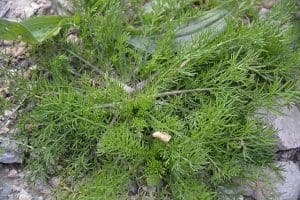
Flowers
The flowers grow at the top of a green, hairy stem that is around 20 cm tall. They look like daisy flowers with yellow disc florets and white ray florets. Around 2 cm in diameter. They look very similar to the flowers of English Chamomile, the main difference is that the yellow centre tends to be larger on the English variety.
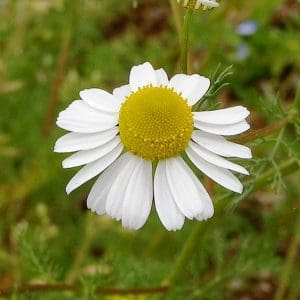
Habitat
It’s a grassland plant and can be found in meadows, cliff edges and coastal paths.
Known Hazards
Chamomile is likely unsafe for use during pregnancy, and its topical use for skin disorders may cause contact dermatitis.
Could be Confused with…
The closely related English chamomile (Chamaemelum nobile) which can be used in the same way. To tell the two apart cut the flower receptacle, (the portion of the blossom that connects the bloom to the flower stalk) in half. If the receptacle has a solid interior, the camomile plant is English. If the receptacle has a hollow interior, the camomile plant is German.
Pineapple Weed (Matricaria discoidea) also looks similar and it can be used in the same way as the Chamomile but the leaves have a pineapple like scent when they are crushed.
Edible Uses
The plant has a long history of use as a flavouring for food, herbal teas and cosmetics.
The fresh or dried flowers can be used to make your own teas, simply steep them in boiling water for 5 minutes.
The plant is used by a few craft brewers as a flavouring.
Notes on Herbal Uses
The plant has been used in traditional medicine since the Middle Ages and is classed as a carminative, painkiller, diuretic and digestive aid. It is also used as a mild laxative and has an anti-inflammatory and bactericidal effects. It was also used to treat gynaecologic complaints such as menstrual cramps and sleep disorders related to premenstrual syndrome. The plant has been found to contain fairly strong antispasmodic and anti-inflammatory constituents and is particularly effective in treating stomach and intestinal cramps
The main constituents of chamomile flowers are polyphenol compounds, including apigenin, quercetin, patuletin, and luteolin, and preliminary research shows that it may have anti-anxiety properties.
Extra notes from the Foragers
As I said due to habitat loss and changes to land use it’s getting harder and harder to find Chamomiles, instead use Pineapple Weed, it’s more common, has a lovely aroma and can be used in the same way.
The name chamomile comes from the Greek word chamaimēlon meaning “earth-apple” in reference to the scent of the leaves when they are crushed. The common name Blue chamomile comes from the blue essential oil that is extracted from the plant.
References:
https://www.gardenguides.com/139258-native-plants-germany.html



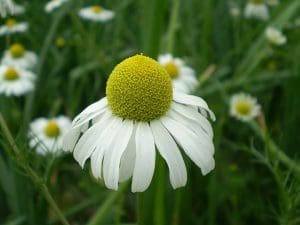
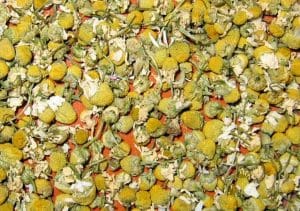
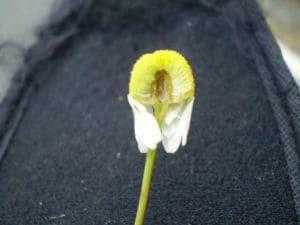



Leave a Reply
You must be logged in to post a comment.